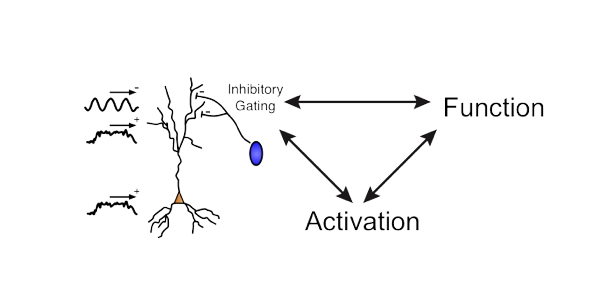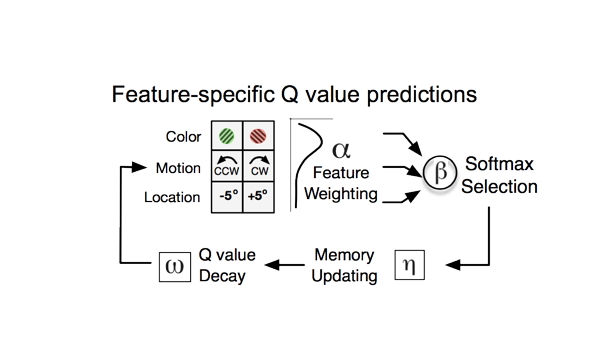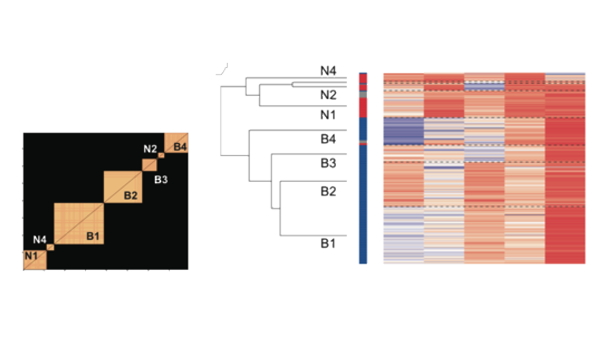-
Prof. Taufik Valiante – Div. of Neurosurgery, Dep. of Surgery, Univ. of Toronto, Canada.
-
Dr. Martin Vinck – University of Amsterdam, The Netherlands
-
Prof. Stefan Everling – Western University, London, Ontario, Canada
-
Dr. Matthew Hutchison – Center for Brain Science, Harvard University, Cambridge, MA, USA
Dr. Marcus Watson – Research Scientist, York University

Dr. Marcus Watson is the lead developer of the Multi-Task Unified Suite for Experiments (M-USE). Marcus works on projects elucidating how we learn to accurately categorize and classify objects, how we learn the relevance of different object features for these categorization tasks, and how these two forms of learning interact with each other. Marcus leads the development of the laboratories new experimental suite for testing learning in humans, animals and artificially intelligent agents (see USE). His researcher profile is available at ResearchGate.
Prof. Taufik Valiante  – Director – Surgical Epilepsy Program, University Health Network, Division of Neurosurgery, Department of Surgery, University of Toronto, Canada.
– Director – Surgical Epilepsy Program, University Health Network, Division of Neurosurgery, Department of Surgery, University of Toronto, Canada.
Dr. Taufik Valiante is a major collaborator at multiple levels and instrumental to realize state-of-the-art methodological analysis of cross-frequency interactions at the mesoscale, of deciphering cell-type specific dynamic circuit motifs at the microcircuit scale, and Dr. Valiante is instrumental and key facilitator for the electro-corticographic (ECoG) recordings of human patient brain signals during complex cognitive attention tasks. Dr. Valiante is the founder and lead neurosurgeon of the Surgical Epilepsy Program of the University Health Network, Toronto Western Hospital. Here some visible outcomes of the joint collaborative work.
-
Micheli C, Kaping D, Westendorff S, Valiante TA, Womelsdorf T (2015) Inferior-frontal cortex phase synchronizes with the temporal-parietal junction prior to successful change detection. NeuroImage (in press).
-
Voloh B, Valiante TA, Everling S, Womelsdorf T (2015) Theta gamma coordination between anterior cingulate and prefrontal cortex indexes correct attention shifts. PNAS, Proceedings National Academy of Science, USA 112:8457-8462. pdf
-
Womelsdorf T, Ardid S, Everling S, Valiante TA (2014) Burst firing synchronizes prefrontal and anterior cingulate cortex during attentional control. Current Biology 24 (22), 2613–2621.pdf.
-
Womelsdorf T, Valiante TA, Sahin NT, Miller KJ, Tiesinga P (2014) Dynamic circuit motifs underlying rhythmic gain control, gating and integration. Nature Neuroscience. 17: 1031–1039. pdf
Martin Vinck  – University of Amsterdam, The Netherlands
– University of Amsterdam, The Netherlands
Martin is involved in multiple projects of the lab, providing invaluable expertise and creative thoughts on approaching and solving analysis problems. Below a subset of Martin’s work that recently established novel, unbiased synchronization measures for spike-LFP and LFP-LFP data. See Martin’s website for more information.
-
Vinck, M., Battaglia, F., Womelsdorf, T., Pennartz, C. 2012. Improved measures of phase-coupling between spikes and the Local Field Potential. Journal of Computational Neuroscience.
-
Vinck, M., Oostenveld, R., van Wingerden, M., Battaglia, F., Pennartz, C. 2011. An improved index of phase synchronization for electrophysiological data in the presence of volume-conduction, noise and sample-size bias. NeuroImage.
-
Vinck, M., Wingerden van, M., Womelsdorf, T., Fries, P., Pennartz, C. M. A., 2010. The pairwise phase consistency: A bias-free measure of rhythmic neuronal synchronization. NeuroImage.
Stefan Everling  – Western University, London, Ontario, Canada
– Western University, London, Ontario, Canada
Stefan provides unprecedented, informed support for multiple projects that were realized or started when I was postdoctoral fellow and research scientist in his lab. Check Stefan’s website for his multiple-neuroscience methods lab with insights from cooling, fMR imaging, pharmacological interventions, antidromic stimulation, electrical stimulation, … !! Here some visible outcomes:
-
Phillips J, Vinck M, Everling S, Womelsdorf T (2013) A long-range fronto-parietal 5-10Hz network predicts ‘top-down’ controlled guidance in a task-switch paradigm. Cerebral Cortex.
-
Kaping, D., Vinck, M., Hutchison, R.M., Everling, S. & Womelsdorf, T. (2011) Specific contributions of ventromedial, anterior cingulate and lateral prefrontal cortex for attentional selection and stimulus valuation. PLoS Biology. 9(12): e1001224. doi:10.1371/journal.pbio.1001224
-
Womelsdorf, T., Johnston, K., Vinck, M. & Everling, S. (2010) Theta activity in anterior cingulate cortex predicts task-rules and their adjustments following errors. PNAS, Proceedings National Academy of Science, USA. 107(11):5248-53.
-
Womelsdorf, T., Vinck, M., Leung, S. & Everling, S. (2010) Selective theta synchronization of choice relevant information subserves goal-directed behavior. Frontiers in Human Neuroscience. 107(11): 5248-53.
Matthew Hutchison  – Center for Brain Science, Harvard University, Cambridge, MA, USA
– Center for Brain Science, Harvard University, Cambridge, MA, USA
Matt is an allround expert on all you can conceive of about functional connectivity analysis with fMRI. Matt is constantly embarking on ambitious projects and following novel ideas. Collaborations span a wide range from structural anatomical mapping to evaluating the dynamic changes of functional connectivity in time series data in fMRI. Matt is currently postdoctoral fellow in the Buckner lab at Harvard University , … !! Here some visible outcomes from this collaboration:
-
Hutchison RM, Womelsdorf T, Allen, EA, Bandettini PA, Calhoun V, Corbetta M, Della Penna S, Duyn J, Glover G, Gonzalez-Castillo J, Handwerker DA, Keilholz S, Kiviniemi V, Leopold DG, de Pasquale F, Sporns O, Walter M, Chang C (2013) Dynamic functional connectivity: Promises, issues, and interpretations. NeuroImage. doi: 10.1016/j.neuroimage.2013.05.079. pdf
-
Hutchison, R.M. Womelsdorf, T., Gati, S.S., Menon, R.S. & Everling, S. (2013) Resting-state networks show dynamic functional connectivity in awake humans and anesthetized macaques. Human Brain Mapping doi: 10.1002/hbm.22058.
-
Kaping, D., Vinck, M., Hutchison, R.M., Everling, S. & Womelsdorf, T. (2011) Specific contributions of ventromedial, anterior cingulate and lateral prefrontal cortex for attentional selection and stimulus valuation. PLoS Biology. 9(12): e1001224. doi:10.1371/journal.pbio.1001224
Collaborative Brain in Action Program 
The Brain in Action CREATE program is an NSERC-funded research training partnership between Canadian members at York University (Toronto), Western UNiversity, (London, Ontario), and Queens Universities (Kingston, Ontario), in partnership with members of the Perception and Action Groups at Justus-Liebig-Universitat Giessen (JLU), and Philipps-Universitat Marburg (UMR), Germany. Together, we form the Brain in Action International Research Training Group (IRTG), which involves both international instruction and international research exchange projects. The goal of this IRTG program is to pool our considerable resources to deepen our understanding of the neural systems and processes that underlie perception and action in everyday living. In addition, the Canadian program prepares trainees to apply this knowledge outside of the university setting, through research collaborations and internships with our non-Academic partners. For more information on the funding structure or on how to become a member please see here.







